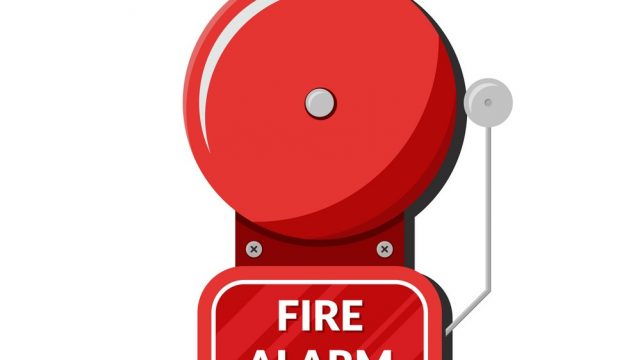
A guide to Fire Alarm System types
Contents:
Conventional fire alarm systems
Two-wire fire alarm systems
Analogue addressable fire alarm systems
Wireless fire alarm systems
Aspirating smoke detection systems
1. Conventional fire alarm systems
Conventional, or four-wire, fire alarm systems have been extensively used in smaller properties such as shops and restaurants for many years.
Less expensive to purchase than other types of alarm system, they work by dividing the building into a number of detection zones, with the detectors and call points within each zone hardwired on dedicated circuits to the control panel. There may be multiple detectors on a single zone. A separate two-core, fire-protected cable for each alarm sounder or bell is needed because they are wired to different loops.
If a detector is activated, the control panel identifies the circuit that contains the triggered device and so indicates the zone from which the fire alarm has originated, but the area then has to be manually searched to pinpoint the individual device.
2. Two-wire fire alarm systems
Also designed for smaller operations, two-wire fire alarm systems are based on standard conventional system technology, but in a two-wire system, the detectors, call points and alarm devices for each zone are wired on the same set of two-core zone cables back to the control panel, enabling it to use a single circuit per zone both for detection and to power the sounders or sirens.
Although two-wire systems cost more to purchase than four-wire systems, they are quicker, more flexible and less expensive to install. Two-wire systems also provide more flexibility in operation, and have additional functionality, such as fault conditions, isolation, and detector recognition.
3. Analogue-addressable fire alarm systems
Analogue-addressable fire alarm systems give details on individual detectors, whereas conventional systems only give information about specific circuits or zones.
Addressable or “intelligent” fire alarm systems are designed for large commercial premises and more complex networked systems, since they are much more expensive and more complicated than conventional two- or four-wire systems, having increased flexibility, intelligence, speed of identification, and scope of control.
In addressable systems, different types of initiating devices are wired in one or more single loops around the premises, requiring less cabling than conventional systems, with each detector or call point having its own unique address.
The fire control panel receives information and status reports from each device and indicates its exact location if there is a fire, fault, smoke, heat, or contamination.
4. Wireless fire alarm systems
More expensive to buy, but more flexible, cheaper, and much quicker to install, wireless, or battery-powered radio-linked, fire alarm systems provide just as much protection as conventional wired systems and are useful when wired installations are not suitable (such as in grade-listed properties where wiring may be prohibited).
There are no cables between the detection devices and the control panel, so doing away with the need for long-term cable tests.
Wireless systems need to comply with EN54-25 standard. Increasingly sophisticated, today’s wireless fire alarm systems are much more reliable than the ones that originated in the 1980s and have multi-frequency links to eliminate signal blocking and collision, allowing a high margin of signal strength to be maintained.
5. Aspirating smoke detection systems
Although technically a detection solution, aspirating smoke detection systems are extremely sensitive and can detect very small or smoldering fires far quicker than other systems.
Aspirating systems use a fan to draw in air from around a building via a network of sampling pipes and sampling holes. The air is then passed through a highly sensitive precision detector that analyses it and generates warning signals of potential fire when it detects smoke particles.
Expensive to install and maintain, these systems are highly sensitive and can detect cool smoke that does not rise to the ceiling, as well as smoldering fires and particles given off by overloaded electrical cables. They are therefore especially useful where early warning is required.
আমি আনিসুর রহমান জুয়েল। Senior Engineer, Signal Technology & Engineering Ltd., Dhaka-1207। বিশ্বের সর্ববৃহৎ বিজ্ঞান ও প্রযুক্তির সৌশল নেটওয়ার্ক - টেকটিউনস এ আমি 5 বছর 4 মাস যাবৎ যুক্ত আছি। টেকটিউনস আমি এ পর্যন্ত 8 টি টিউন ও 0 টি টিউমেন্ট করেছি। টেকটিউনসে আমার 1 ফলোয়ার আছে এবং আমি টেকটিউনসে 0 টিউনারকে ফলো করি।